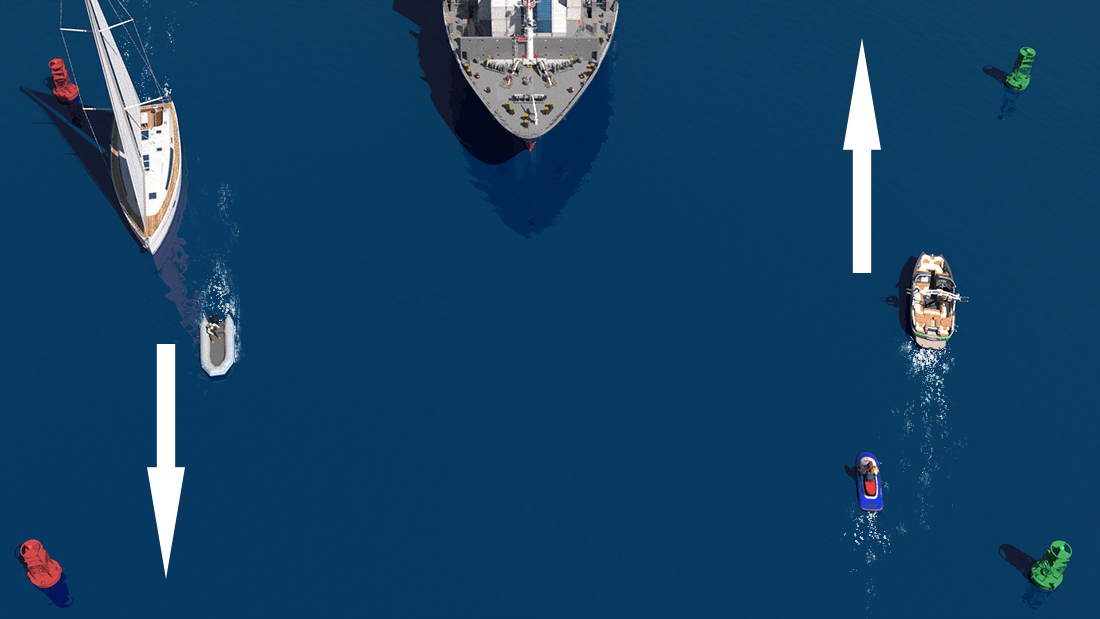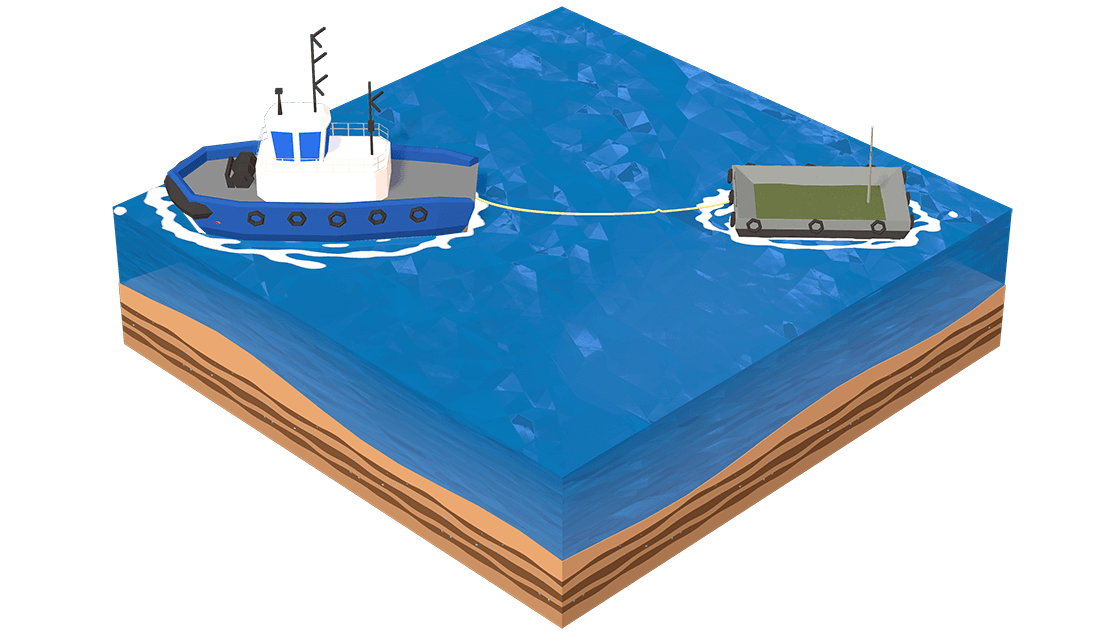Operating in narrow channels
What should the operator of a powerboat do when approaching a very large vessel?
If at all possible, stay out of areas where there is commercial vessel traffic such as shipping lanes or traffic separation zones. Large vessels and barges have special problems in maneuvering and cannot and will not get out of your way.
A boat operating in a narrow channel is required to keep as close as is safe to what side of the channel?
A vessel proceeding along the course of a narrow channel or fairway shall keep as near to the outer limit of the channel or fairway which lies on her starboard side as is safe and practicable.

A vessel of less than 20 meters in length or a vessel under sail shall not impede the passage of a vessel which can safely navigate only within a narrow channel or fairway. When approaching large vessels, remember that they have limited visibility, turning, and stopping capabilities. It is important to maintain an all-around lookout at all times and to be prepared to move out of the path of larger vessels.
A vessel engaged in fishing shall not impede the passage of any other vessel navigating within a narrow channel or fairway. As well, a vessel shall not cross a narrow channel or fairway if such crossing impedes the passage of a vessel which can safely navigate only within such channel or fairway.
A vessel nearing a bend or an area of a narrow channel or fairway where other vessels may be obscured by an obstruction shall navigate with particular alertness and caution and shall sound the appropriate signal.
Any vessel shall, as much as possible, do not anchor in a narrow channel.
A power-driven vessel shall, as much as possible, keep out of the way of a vessel not under command.
If possible, pleasure boats should travel in groups to increase their visibility.
Beware of tugs - Invisibility of the cable
A pleasure boat should also keep clear from docked ferry, ferry in transit or vessels in tow. Listen out for sound signals from ferries. Be aware that a long blast indicates the ferry is leaving the dock.
What should you never do when you encounter a tug and its tow?
Tugs may tow vessels on a long tow line that extends behind the tug. The tow line is often so long that it hangs below the surface of the water and is almost invisible. When passing a tug boat, never pass between a tug and its tow. If a small boat were to hit the hidden line, it could capsize and be run down by the structure being towed. Many towed structures will also have a long trailing line behind them. Give the tug and its tow plenty of space in every direction.
Ferries operated by cables constitute a special hazard. When the ferry is under way, its cables are pulled taut and extend from both ends. Fatal accidents have occurred when vessels have attempted to pass over or under these cables while the ferry was in operation. When the ferry is secured at its landing, however, the cable is lowered and does not impede navigation. Boaters should use extreme caution around cable ferries and other vessels with other vessels/barges in tow.

